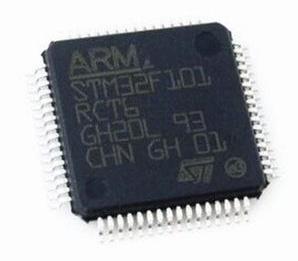产品规格:
产品数量:
包装说明:
关 键 词:怎么看手机芯片型号
行 业:电子 电子产品设计
发布时间:2022-12-12
ATtiny88 Automotive 8-bit AVR Microcontroller with 8K Bytes In-System Programmable Flash DATASHEET Features High performance, low power AVR 8-Bit microcontroller Advanced RISC architecture 123 powerful instructions most single clock cycle e...
Special Microcontroller Features– debugWIRE On-Chip Debug System– In-System Programmable via SPI Port– Power-On Reset and Programmable Brown-Out Detection– Internal Calibrated Oscillator– External and Internal Interrupt Sources– Three Sleep Modes: Idle, ADC Noise Reduction and Power-Down– On-Chip Temperature Sensor•
Peripheral Features– One 8-bit Timer/Counter with Separate Prescaler and Compare Mode– One 16-bit Timer/Counter with Prescaler, and Compare and Capture Modes– 6- or 8-channel 10-bit ADC– Master/Slave SPI Serial Interface– Byte-oriented 2-wire Serial Interface (Philips I2C Compatible)– Programmable Watchdog Timer with Separate On-Chip Oscillator– On-Chip Analog Comparator– Interrupt and Wake-up on Pin Change•
The Port B pins are tri-stated when a reset condition becomes active, even if the clockis not running.Depending on the clock selection fuse settings, PB6 can be used as input to the internal clockoperating circuit.The various special features of Port B are elaborated in “Alternate Functions of Port B” on page69.1.1.6Port C (PC7, PC5:0)Port C is a 8-bit bi-directional I/O port with internal pull-up resistors (selected for each bit).
ThePD[7:4] output buffers have symmetrical drive characteristics with both sink and source capabil-ities, while the PD[3:0] output buffers have high sink capabilities. As inputs, Port D pins that areexternally pulled low will source current if the pull-up resistors are activated. The Port D pins aretri-stated when a reset condition becomes active, even if the clock is not running.The various special features of Port D are elaborated in “Alternate Functions of Port D” on page75.
The ATtiny48/88 is a low-power CMOS 8-bit microcontroller based on the AVR enhanced RISCarchitecture. By executing powerful instructions in a single clock cycle, the ATtiny48/88 achievesthroughputs approaching 1 MIPS per MHz allowing the system designer to optimize power con-sumption versus processing speed.





